Hi, I’m Faye, welcome! Here, we get weird and wonderful and sometimes a little naughty on the path to personal empowerment. And we do it through the language of movement. We move from prescriptive to Expressive. From obedient to Deviant. From copied to Embodied.
Subscribe for free to enjoy movement inspired essays & poetry, and occasional movement snacks. Or, join the community with a paid membership for access to the full archive of 2x weekly movement practices, plus seasonal workshops to support you in embodying your purpose and passion.
I’d love to move with you!
Where does movement come from? Anywhere? Nowhere? Surely it must come from somewhere.
Perhaps we will never understand how it works, exactly, but it is clear that movement emerges from desire. As for where desire comes from? That is an inquiry for a lifetime. One we touch every time we do anything. Any time we breathe.
Says Hannah Arendt, “Craving is determined by the definitely given thing it seeks, just as a movement is set by the goal toward which it moves. For, as Augustine writes, love is “a kind of motion, and all motion is toward something.”
Is moving our bodies a gesture toward loving ourselves?
It depends.
Often, our movement is a means to an end. A habitual quest. We want rippling abs, a nice ass. We want approval. We want something tangible. There is some thing we seek, through our movement, to consume, to possess, whether it is a constructed self image or something we buy from etsy.
What if our movement were propelled by something greater than our desire to have, and our fear of not having? What if, rather than seeking to rid ourselves of longing by getting something, we were brave enough to bear the weight of our wanting? What if, rather than filling the void with shallow substitutes, we were to feel the thing itself?
Again, Hannah Arendt: “Fearlessness is what love seeks. Love as craving is determined by its goal, and this goal is freedom from fear… A love that seeks anything safe and disposable on earth is constantly frustrated, because everything is doomed to die. In this frustration love turns about and its object becomes a negation, so that nothing is to be desired except freedom from fear. Such fearlessness exists only in the complete calm that can no longer be shaken by events expected of the future.”
Longing is imbued with a sense of tension, often about some unknown future that may or may not exist. We move toward our desire aiming to decrease the discomfort of not knowing.
But before we assign words to our longing, before we say, “I want a house and a new car and a million dollars,” we feel something: pure sensation, prior to association.
How does this sensation show itself? A feeling of contraction in the body — our awareness fixed on something — whatever it is pulling us closer, keeping us captive.
In the words of Maria Popova, “Nothing kidnaps our capacity for presence more cruelly than longing. And yet longing is also the most powerful creative force we know.”
Perhaps our greatest trouble is that we do not feel deeply enough. We allow our presence to be captured again and again in shallow pursuits of desire, and we are never sated. Our habitual filling of the apparent void dulls our senses, you know, like the way the last bite of cake isn’t nearly as satisfying as the first?
So are we doomed? Of course not. We simply need to practice feeling beneath the initial impulse. We need to be able to bear the tension for longer than the moment it takes to walk to the cupboard or dial our ex’s number. We need to make our movement — our lives — purposeful. In doing so, our sense of longing becomes an entirely different thing. Spacious.
For Martha Graham, dancer and choreographer for the ages, movement originated in the tension of a contracted muscle, and continued in the flow of energy released from the body as the muscle relaxed.
This was the foundation of her training philosophy, along with spirals, which we’ll talk about plenty.
Training, in my view, is controlled chaos to prepare for the uncontrolled chaos that is life.
The uncontrolled chaos goes like this: we notice in our awareness, and thus, in our bodies (our bodies ARE consciousness) a sense of tension. We feel it as an urge, a pulling, a realization that there is something, some object, some person, some sensation, some richness, some fullness, some experience, we wish for.
If tension…
Then release. This is the natural order of things.
So it follows, our movement toward our desire is the only suitable option.
If we haven’t trained to be with and open to the sensation of longing — this contraction in our bodies — we will jump on the impulse because that seems to be the only way to survive. Our action offers us the hope that we may be released from desire’s death grip.
But it doesn’t have to be like this.
So, where does that leave us?
We have to go deeper. Deeper where? Here. In the present. Where hunger lives. To be completely sated is a myth. In the future, it will not happen. There is only now. The release is in letting go of the idea of acquiring satiety through things. Releasing yourself into the sensational flow of this eternal moment. Letting go into longing itself. The ineffable thing. The thing itself we can only touch when we become it. Move as an expression of it. Open the channel to receive what hunger is. Taste the richness of ourselves.
“This desire for our own far off country [is] the secret which hurts so much that you take your revenge on it by calling it names like Nostalgia and Romanticism and Adolescence; the secret also which pierces with such sweetness that when, in very intimate conversation, the mention of it becomes imminent, we grow awkward and affect to laugh at ourselves; the secret we cannot hide and cannot tell, though we desire to do both. We cannot tell it because it is a desire for something that has never actually appeared in our experience. We cannot hide it because our experience is constantly suggesting it, and we betray ourselves like lovers at the mention of a name. Our commonest expedient is to call it beauty and behave as if that had settled the matter…
The books or the music in which we thought the beauty was located will betray us if we trust to them; it was not in them, it only came through them, and what came through them was longing. These things — the beauty, the memory of our own past — are good images of what we really desire; but if they are mistaken for the thing itself they turn into dumb idols, breaking the hearts of their worshipers. For they are not the thing itself; they are only the scent of a flower we have not found, the echo of a tune we have not heard, news from a country we have never visited.” — C.S. Lewis
Our longing is, at its core, to become. To transform our way of being in the world. To express the thing itself, the burning core of us, the core that is our love, our passion, our presence; our need to be seen, to pour out, to share ourselves.
This burning core, whether we are sensationally aware of it or not, is a flame creating pressure within the vessels of our bodies. It is waiting for more oxygen. Ready and willing to surge through us. To shape our awareness and our beingness. This flame, this force, this eros, this creative magic, when given space, will alchemize us from the inside out.
But first, we must create awareness of it, which means becoming willing to feel it, physically. This is different than thinking about it. To feel our longing is the work of contraction and release. Of letting the energy of desire itself — the mysterious longing we sense — to flow through us. To take shape through our bodies. It is the work of allowing ourselves to breathe more, to release more, to feel the spirit of us rising and falling with each inhale and exhale. To open doors — create pathways of emergence — as we open our bodies to receive.
“Desire mediates between subject and object, and it annihilates the distance between them by transforming the subject into a lover and the object into the beloved. For the lover is never isolated from what he loves; he belongs to it… Since man is not self-sufficient and therefore always desires something outside himself, the question of who he is can only be resolved by the object of his desire and not, as the Stoics thought, by the suppression of the impulse of desire itself: “Such is each as is his love” [Augustine wrote]. Strictly speaking, he who does not love and desire at all is a nobody.” — Hannah Arendt
After your practice, take a moment to contemplate this:
What is your relationship with desire? Are you willing to feel it without filling it, or do you feel like a victim to its grip?
When longing comes around, do you embrace the mystery, or shut down and distract yourself?
Can you zoom out and notice what may lie beneath your habitual impulses?
I invite you to share any insights in the comments, or if you prefer to remain private, send me a direct message.
As always, thank you for your attention and thank you for practicing with me.
xx Faye
P.S. Don’t forget to save this post for later if you couldn’t do the practice now!
•••••••••
ICYMI: last week’s explorations:
Mapping the Territory of Our Bodies: Becoming a Human Compass and the Deeper Meaning of Choreography
Taking Up Space: Embody More of You through a Moving Exploration of Personal Space and Consciousness
•••••••••
Click the ♥️ below so more people can find me on Substack <3 And while you’re at it, share this post on Notes or with a friend, and let me know what you think in a comment!


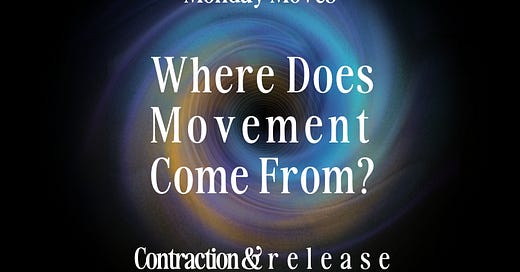







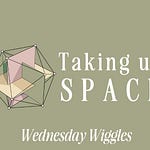
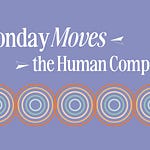
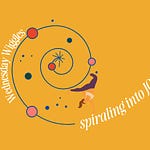

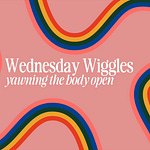
Share this post